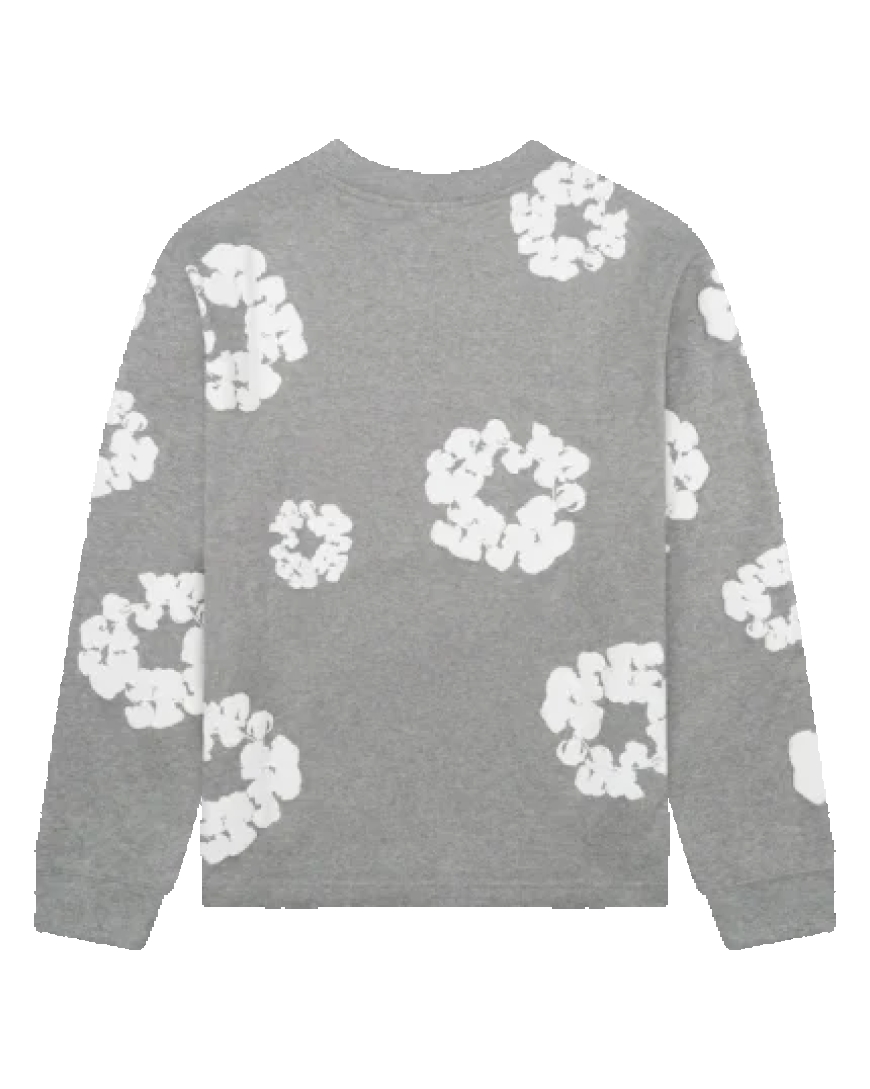Cultural Threads: Denim Tears and the African Diaspora
Denim Tears Canada Collection at Official Denim Tears Clothing Website. Enjoy Fast Shipping and Substantial Discounts! Up to 50% Off.

Fashion is often considered a reflection of the times, an expression of individual style, or a trend-driven industry driven by commerce and celebrity. Yet, in the hands of visionaries, denim tears fashion transforms into something much deeper: a medium for storytelling, history, and activism. Denim Tears, the brainchild of artist and designer Tremaine Emory, embodies this transformation. It is more than a clothing brandit is a cultural statement, an archive of Black history, and a powerful narrative of the African Diaspora stitched into fabric.
Denim Tears has redefined the boundaries of streetwear by weaving the rich, complex history of the African Diaspora into the very core of its designs. It uses fashion as a visual language to explore identity, trauma, memory, and resilience. In doing so, it forces its audience to confront the legacies of slavery and colonialism while celebrating Black culture, strength, and beauty.
The Origins of Denim Tears
Tremaine Emory launched Denim Tears in 2019, but his career in fashion had been long in the making. He worked behind the scenes with notable brands and artists such as Kanye West, Virgil Abloh, and Frank Ocean before stepping into the spotlight with his own vision. Emory, also known as "Denim Tears," approached the creation of his brand with the seriousness of a historian and the creative eye of an artist.
The brand debuted with a striking and emotionally charged collection: denim jeans adorned with cotton wreath motifs. These designs were more than aesthetically pleasing; they were loaded with meaning. Cotton, after all, is not just a textile. It is a symbol of Black suffering and endurance, an enduring reminder of the centuries when enslaved Africans were forced to cultivate cotton across the American South. By placing cotton imagery on denima fabric synonymous with American workwear and laborEmory made a deliberate statement about the foundational role of Black bodies in building American wealth and culture.
Denim as a Canvas for Resistance
Denim itself is a meaningful choice for this project. Once considered utilitarian clothing for the working class, denim has evolved into a symbol of rebellion, youth, and counterculture. For African Americans, it also carries layered meaningsconnected to slavery, sharecropping, and the long struggle for civil rights and economic equity.
Denim Tears repurposes this fabric into something radical and restorative. Emorys collections often feature iconography that ties directly to African American history: cotton wreaths, Pan-African colors, African tribal patterns, and photographic prints of civil rights moments. These garments are not just fashionthey are protests, memorials, and conversations.
In one campaign, Denim Tears collaborated with Levis to release a collection that honored the 400-year anniversary of the first enslaved Africans arriving in what would become the United States. The project was a poignant reminder of how deeply rooted Black pain is in American history, and how frequently that pain is sanitized or ignored in mainstream narratives. The campaign did not simply sell clothes; it sold an experience, a lesson, a piece of historical truth woven into the seams.
A Brand with a Purpose
What sets Denim Tears apart from most fashion labels is its unwavering sense of purpose. Emory does not shy away from political messagingin fact, he leans into it with fearless authenticity. Every piece of clothing is a statement, every campaign a history lesson. In an industry that often prioritizes profit over principle, Denim Tears is unapologetically driven by values and vision.
Emory has made it clear that he sees his work as a form of cultural commentary. He has described his creative process as one that blends memory, family legacy, and political consciousness. His grandfather picked cotton in Mississippi; that memory lives on in the cotton motif that reappears throughout his collections. Rather than erase or romanticize this history, Emory reclaims it, confronts it, and immortalizes it in design.
This reclamation is not just symbolic. It is also an act of empowerment. By turning symbols of oppression into elements of pride and artistry, Denim Tears empowers wearers to carry history not as a burden, but as a badge of resilience.
The African Diaspora in Every Stitch
Denim Tears is profoundly rooted in the story of the African Diaspora, a global tapestry of displacement, survival, and cultural brilliance. The African Diaspora refers to the communities throughout the world that descended from the historic movement of African peoples, largely through the transatlantic slave trade. These communities have carried their traditions, adapted to new environments, and created vibrant cultures that blend the old and new.
Emorys work celebrates this hybridity. His garments often incorporate elements from West African design, Caribbean culture, Southern Black heritage, and contemporary urban aesthetics. This fusion acknowledges the multiplicity of the Black experiencediverse yet connected by shared histories of colonization, resistance, and creativity.
By connecting these threads, Denim Tears tells a diasporic story that refuses to be monolithic. It honors the many voices, experiences, and identities that make up Black history across the globe. From Nigeria to Jamaica to Harlem, each piece of clothing serves as a tribute to Black innovation and cultural power.
A Wider Cultural Movement
Denim Tears is part of a broader cultural renaissance that is reclaiming and celebrating Black identity across mediums. Artists, musicians, filmmakers, and writers are increasingly using their platforms to explore themes of ancestry, trauma, and liberation. From Beyoncs visual album Black Is King to Ava DuVernays When They See Us, there is a growing recognition of the importance of telling Black stories from Black perspectives.
In the world of fashion, Emory stands alongside figures like Kerby Jean-Raymond of Pyer Moss and Aurora James of Brother Velliesdesigners who infuse their work with Denim Tears Hoodie activism and cultural significance. Together, they are reshaping what fashion can be: not just a consumer product, but a site of dialogue, memory, and transformation.
Conclusion: Wearing the Past, Shaping the Future
Denim Tears is not merely about clothingit is about culture. It asks us to consider what we wear and why. It challenges the fashion world to look inward and acknowledge its historical complicity in systems of oppression. But more than that, it invites wearers to be part of a living, breathing storyone that stretches from the cotton fields of the antebellum South to the streets of contemporary cities.
By turning denim into a medium of remembrance and resilience, Tremaine Emory has created more than a brand. He has created a movement. Denim Tears is a reminder that fashion can carry the weight of history and the hope of liberation. In its stitches are the voices of ancestors, the pain of displacement, and the power of reclamation.
As we continue to reckon with the legacies of slavery, colonization, and systemic racism, Denim Tears reminds us that the past is not distantit is woven into the very fabric of our lives. And through that fabric, we can tell new storiesstories of survival, identity, and strength.

































